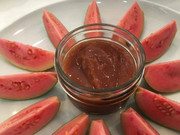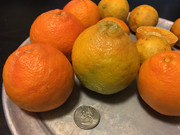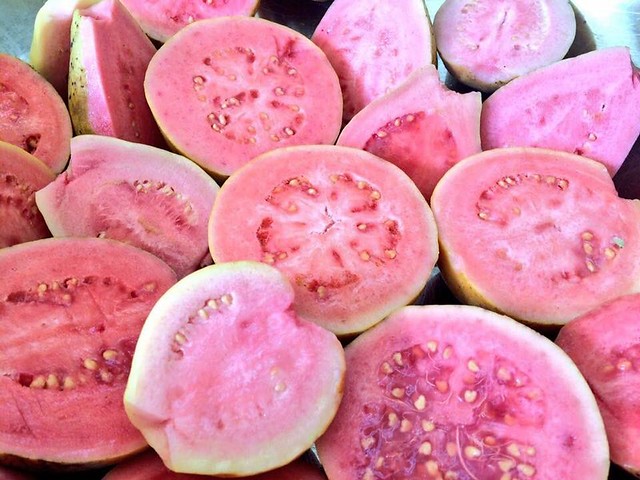Sometimes it's difficult to focus on less seeds, because various seedier varieties can oftentimes taste excellent and better to some people depending on their taste preference. There's also a lot of non air layered seeds that have varying levels of acid. Those are better suited for preserving. Flavor can be compromised if one looks solely for the least seediest guava cultivar. A dessert guava is usually thick shelled and the inner seedy pulp can be cooked into a sauce or jelly. Guava is quite utilitarian and can serve various other purposes for the crafty culinarian.
Guavas have pectin. By cooking them and passing through a strainer you can make guava jam. If you pass through a straining cloth you can make guava jelly. You can get instructions on You Tube or you contact me.
In Brazil in many restaurants they serve Romeu & Juliet for dessert ( A slice of guava jam on side with a slice of cheddar or Edam cheese) or Guava Ice Cream.
Romeo & Juliet is a testament that the marriage between guava & cheese is worth noting. A variety of cheeses can be enjoyed, not just cream cheese. Edam and cheddar along with Manchego, GruyŤre and many more. What's your favorite? In Cuba "Pan con Timba" is the equivalent to Brazil's "Romeo & Julieta". A slice of guava paste on a piece of Cuban bread, cheese of your preference if desired. Also known as "Timba" when served humbly on a cracker. Guava shells with cheese is invariably the most well known classic Floridian guava dessert, canned guava shells, which can be spiced to your liking with the Myrtaceae relative, clove
Syzygium aromaticum, cinnamon and allspice berries etc. It was much enjoyed by Florida Crackers and was supported by early Bahamian settlers and many more Caribbean / Latin American residents.
It is important to note that the pectin content exists in the skin, so the marmalade made using the other skin is also highly praised & the finest product made from guavas aside from the extraction of pure guava juice. Nectar is not finer product than pure juice, since it can be doctored with sugar per governmental regulations. The jelly which is generally pink is also considered one of the finest jellies in the world. A finer jam can be made by omitting the skins making the preserve much smoother and less gritty than the marmalade.
A dense paste is made using pectin and higher levels of sugar. Guava crystalizes as it ages, particularly the thick paste, what I believe is called "guava cheese". Seed removal should be done either before or after blanching. Sorbet, ice cream, preserves, syrup and even the seeds can be used for medicinal purposes.
I also like to serve the guava cut into wedges and encourage people to try eating the fruit whole, skin and seeds. The skin is very nutritive and contains high levels of lycopene, more than the fruits of the tomato plant.








